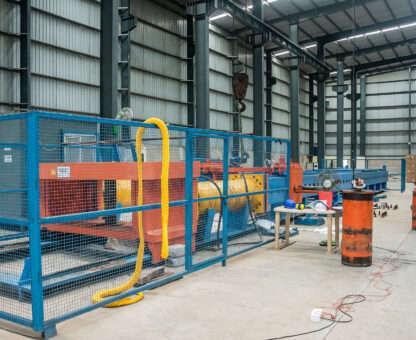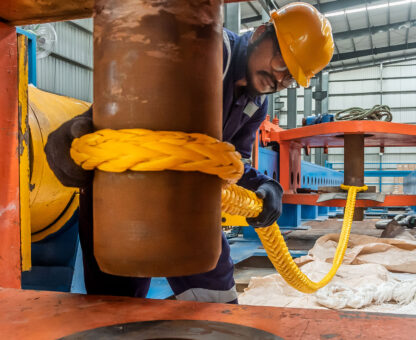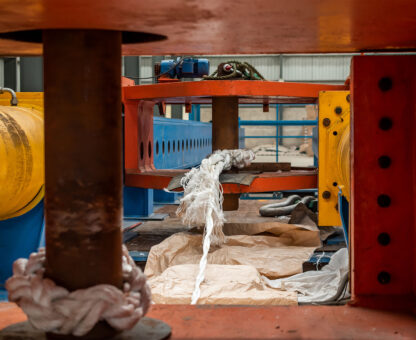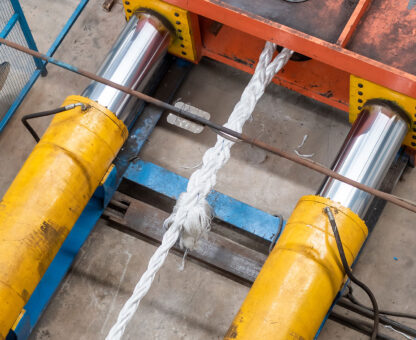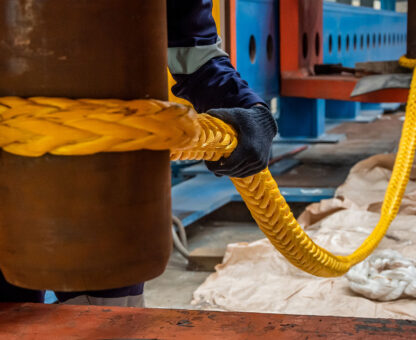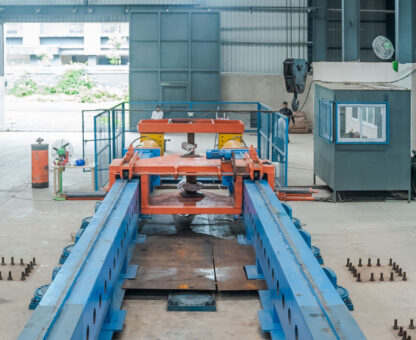The Future of Rigging: How Automation is Transforming Lifting Operations
Automation is rapidly reshaping industries worldwide, and the lifting and rigging sector is no exception. As technology continues to advance, the adoption of automated solutions is revolutionizing how heavy loads are managed, improving efficiency, safety, and precision in lifting operations. This evolution is paving the way for smarter, faster, and more reliable lifting systems.
The Rise of Automation in Lifting and Rigging
Traditionally, lifting operations relied heavily on manual labor and basic mechanical tools. While these methods served their purpose, they often involved significant safety risks, operational inefficiencies, and human errors. Automation, driven by advancements in robotics, sensors, and software, is now addressing these challenges head-on.
Key technologies enabling automation in lifting include:
Shackles are versatile and come in different forms, each suited for specific purposes:
Robotic Arms and Cranes: Automated systems equipped with precision-controlled robotic arms or cranes can handle complex lifting tasks with minimal human intervention.
AI-Powered Load Balancing Artificial intelligence (AI) optimizes load distribution, ensuring stability during lifting and reducing the likelihood of accidents.
Internet of Things (IoT) IoT sensors provide real-time data on load weight, stress, and environmental conditions, enabling operators to make informed decisions.
Digital Control Systems Automated lifting gear often integrates digital controls, allowing remote monitoring and operation, even from a safe distance.
Benefits of Automation in Lifting Operations
Enhanced Safety Safety is a top priority in industries dealing with heavy loads. Automated systems minimize human involvement in hazardous environments, significantly reducing the risk of accidents and injuries. Features such as automated load monitoring and emergency shut-off mechanisms add extra layers of protection.
Increased Efficiency Automation streamlines lifting processes by reducing setup times, eliminating manual adjustments, and ensuring precision. Tasks that once took hours can now be completed in minutes, leading to increased productivity and reduced downtime.
Improved Precision Automated systems operate with unparalleled accuracy. They can lift, move, and position loads with millimeter-level precision, which is particularly valuable in industries like aerospace and manufacturing, where exact alignment is critical.
Cost Savings While the initial investment in automated equipment may be high, the long-term savings are significant. Automation reduces labor costs, minimizes operational errors, and extends the lifespan of equipment by ensuring optimal use.
Applications of Automation in Rigging and Lifting
Automation is making waves across a variety of industries:
Construction Automated cranes and load-balancing systems improve safety and speed in building projects.
Maritime Robotic loading arms enhance efficiency in cargo handling at ports.
Manufacturing Precision lifting robots streamline assembly lines and reduce operational delays.
Oil and Gas Remote-controlled lifting systems ensure safe operations in challenging offshore environments.
Challenges in Adopting Automation
Despite its advantages, adopting automation in lifting comes with challenges:
High Initial Costs Automated systems often require significant upfront investment, which can be a barrier for smaller companies.
Skilled Workforce Operating and maintaining automated systems necessitate a workforce trained in advanced technology.
Integration Issues Older infrastructure may not be compatible with modern automated systems, requiring upgrades or replacements.
The Road Ahead
As automation continues to evolve, it is set to redefine the lifting and rigging industry. Emerging technologies like machine learning, augmented reality (AR), and 5G connectivity will further enhance the capabilities of automated systems, enabling real-time decision-making and predictive maintenance.
Companies that embrace automation will benefit from safer, faster, and more efficient operations, giving them a competitive edge in an increasingly tech-driven marketplace.
Automation is no longer just an option but a necessity for industries seeking to future-proof their operations. By integrating automated solutions, businesses can ensure that lifting operations are not only safer and more efficient but also aligned with the technological advancements shaping the future.
Have a Project? Let’s Talk!
TESTING FACILITY
